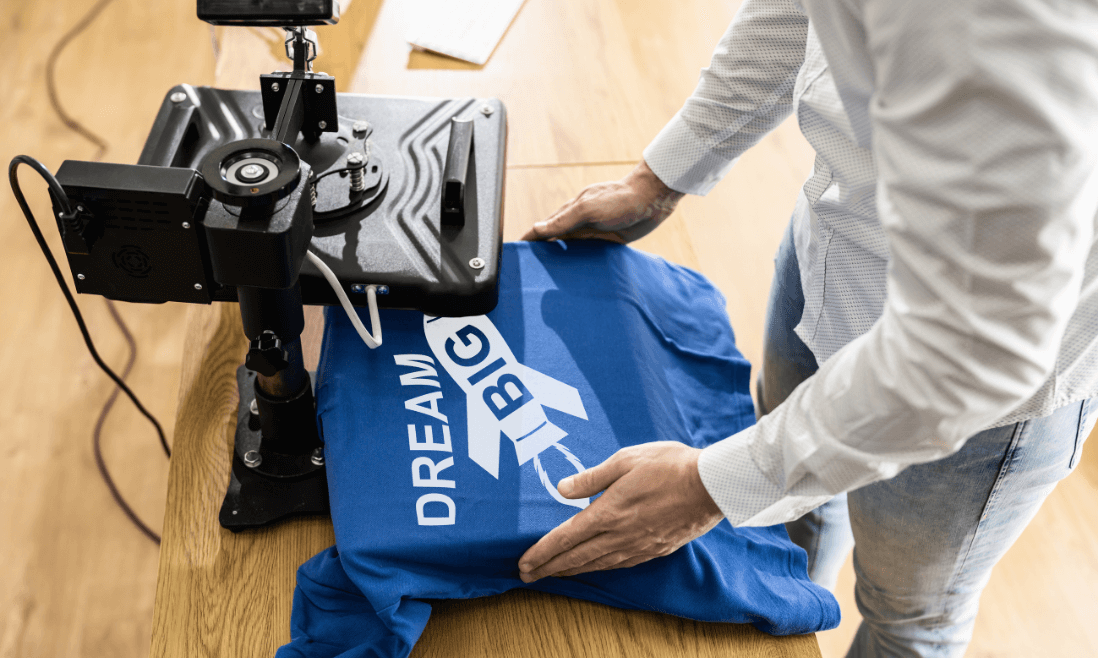Ever dream of seeing your witty slogan plastered on a T-shirt, or your vibrant pattern adorning a phone case? You know, the kind of dream that urges your creativity and lining up to pay for it?
Think of it as this: your artwork, unleashed onto mugs, tees, phone cases, and more – but without the warehouse woes, the shipping nightmares, or the financial shackles. Understanding how to start a print-on-demand business lets you transform your passion into profit, one perfectly printed creation at a time.
From finding your niche and designing to picking the perfect Print-on-demand (POD) partner and marketing your brand like a social media ninja, this blog is your ultimate guide to turning your artistic hustle into a thriving online business. So, let’s buckle up and explore the criteria of how to start a print-on-demand business.
Contents
What is a Print On Demand Business?
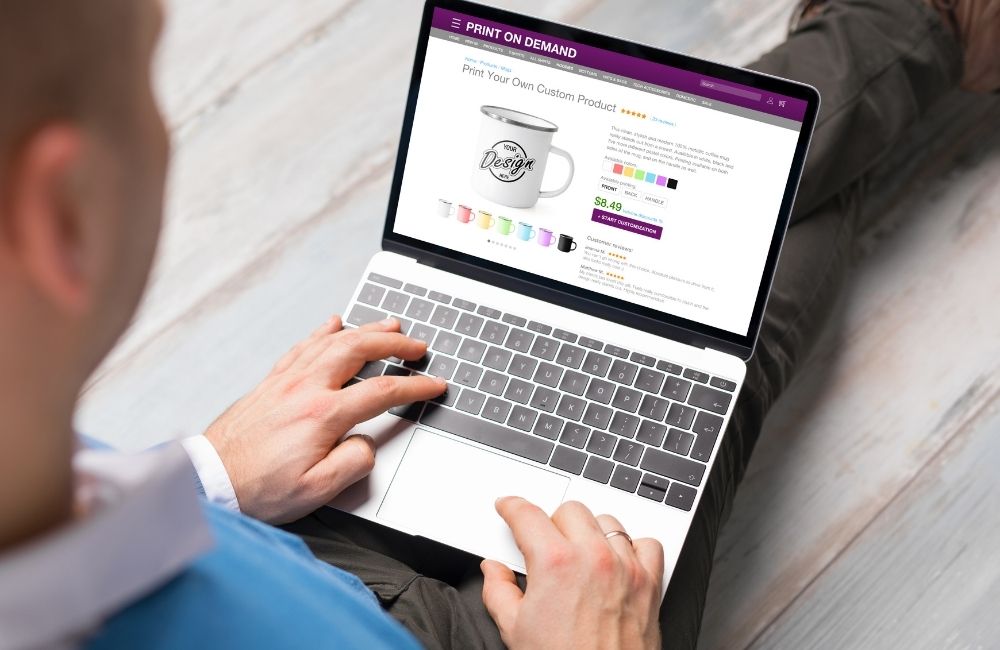
A Print On Demand business is a model where products are only printed or manufactured after a customer places an order. This differs from the traditional retail model where businesses purchase inventory upfront and store it before it’s sold.
A POD business can be a viable and profitable option for entrepreneurs and businesses looking to enter the e-commerce space with low upfront costs and high levels of flexibility.
However, it’s crucial to carefully consider the advantages and disadvantages, understand the POD landscape, and develop a strong marketing and branding strategy to succeed in this competitive market.
Pros and Cons of Print-On-Demand
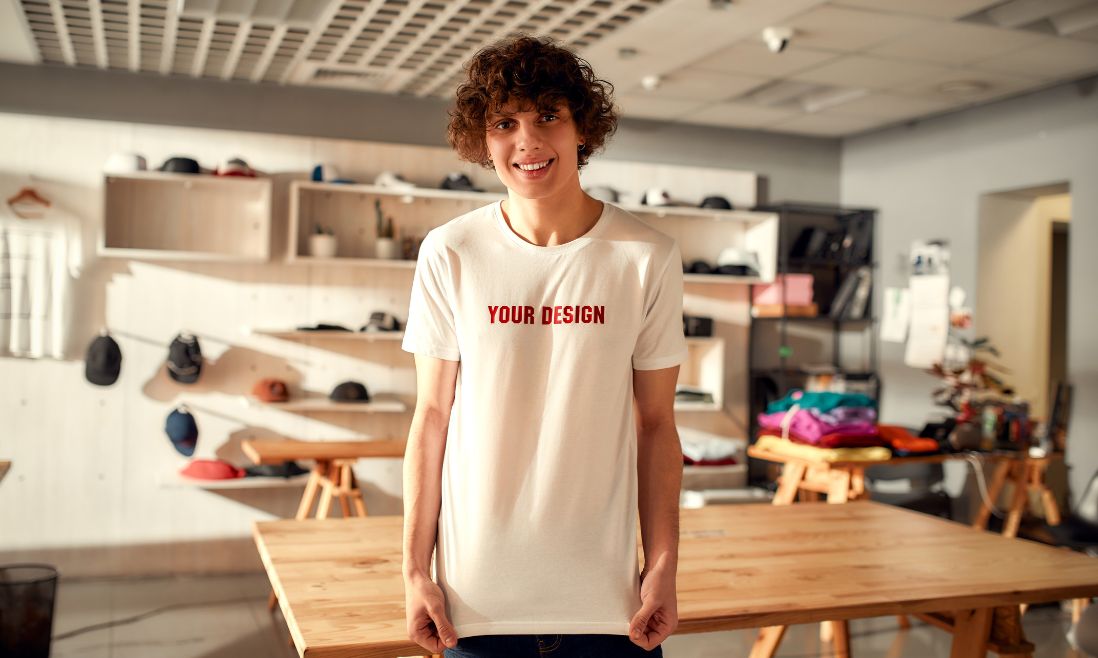
POD is a business model where products are only printed when an order is placed. This means no upfront inventory costs and the ability to offer a wide variety of designs without the risk of overstocking. But is POD right for you? Let’s weigh the pros and cons:
| Pros | Cons |
| Low Startup Costs | Lower Profit Margins |
| Wide Variety of Products | Quality and Production |
| Customization | Time Flies (or Not Always) |
| Scalability | Standing Out in a Sea of POD Players |
| Eco-Friendly | Marketing Muscle |
Pros
- Low startup costs: No need to invest in large quantities of inventory, making POD a great option for starting a business with minimal risk.
- Wide variety of products: Offer a vast array of products like t-shirts, mugs, phone cases, and more, without worrying about unsold merchandise.
- Customization: POD allows for easy customization of designs, enabling you to cater to specific niches and customer preferences.
- Scalability: Easily scale your business up or down based on demand without the burden of excess inventory.
- Eco-friendly: POD reduces waste by only printing what’s ordered, minimizing environmental impact.
Cons

- Lower profit margins: POD companies charge per-unit printing fees, which can eat into your profits compared to traditional wholesale models.
- Limited control over quality and production: You rely on the POD company for printing and fulfillment, potentially limiting control over quality and production times.
- Slower shipping times: POD products are typically made to order and shipped individually, which can lead to slower shipping times compared to traditional retailers.
- Competition: The POD market is saturated, making it challenging to stand out and attract customers.
- Marketing challenges: You need to effectively market your products to drive traffic and sales, which can be expensive and time-consuming.
POD is a powerful tool for launching and scaling your business, but it’s not a magic formula for effortless success. Weighing the advantages and disadvantages, planning for potential challenges, and building a strategic approach are crucial steps toward thriving in the POD landscape.
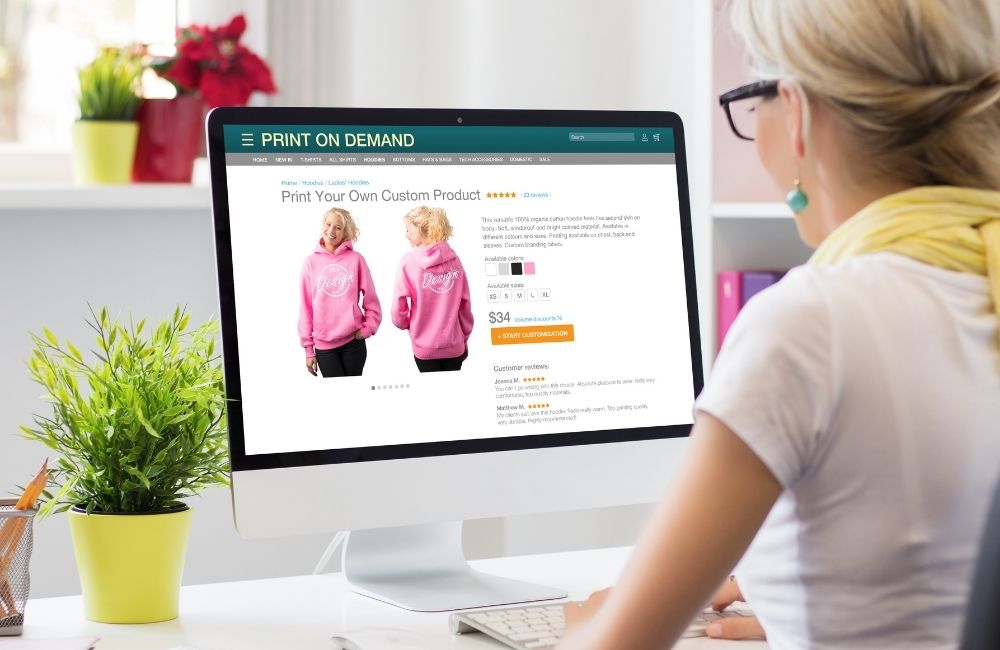
How to Start a Print-On-Demand Business
This guide will walk you through the essential steps of launching your own POD business, from choosing your niche and designing your products to finding the right POD partner and promoting your brand. So, grab your creativity, and let’s dive in!
1. Choose Your Niche & Products
Enter a thriving market segment with devoted clients and little competition. Allow your passions and experience to lead you, whether it’s catering to travel fans’ wanderlust, dog lovers’ playful spirit, or gamers’ endless energy by these specific steps:
- Explore Your Interests and Engage with Online Communities: Identify subjects that genuinely captivate you and align with your creative vision. Engage with online communities, social media groups, and forums that revolve around these interests. This immersion not only connects you with like-minded individuals but also provides valuable insights into the trends, discussions, and preferences within your chosen niche.
- Market Research: Scrutinize niches for saturation levels, analyze the competitive landscape, and gauge audience engagement within these platforms. Leverage tools like Google Trends for comprehensive keyword research, helping you understand search trends and identify potential gaps or opportunities in the market.
- Connect with Your Potential Audience: Take the extra step of niche validation. Engage with potential customers through interviews or surveys to gain a deeper understanding of their needs, preferences, and pain points. By obtaining feedback from your target audience, you can fine-tune your offerings to better meet their expectations and increase the likelihood of success.
2. Get Your Designs & Store Ready

Create interesting product designs that tell tales about your creations. High-quality product designs are worth their weight in gold and will be your secret weapon in establishing a loyal fan base.
- Refine Your Designs: Crafting a curated selection of high-quality, impactful designs. Focus on creating designs that authentically resonate with your niche audience. avoid overwhelming both yourself and your potential customers with an abundance of choices by beginning with a select few designs.
- Collect Interaction: Utilize social media platforms, polls, and product reviews to encourage feedback on your designs and product offerings. Create a sense of community around your brand, allowing your audience to feel valued and heard.
- Analyze Data for Continuous Improvement: Identify popular designs, and analyze customer demographics. Use this information to make informed decisions and iterate on your offerings to refine your designs, adjust your product choices, and focus on what resonates best with your audience.
3. Find the Right Print-on-Demand Partner

Let’s explore how to choose the best print-on-demand partner for you. Below are the factors that you’ll need to keep in mind to make the best decision:
- Explore Multiple POD Providers: Evaluate key criteria such as printing quality, product variety, pricing structures, delivery alternatives, and the quality of customer service offered by each provider.
- Order and Evaluate Samples: Taking a hands-on approach by ordering samples from different vendors, allows you to assess the printing quality and tactile feel of the products firsthand. You can make informed decisions about which providers align best with the quality standards you envision for your products.
- Consider Fulfillment Control Options: Some providers offer in-house fulfillment, covering everything from printing to shipment, providing a more streamlined experience. Others utilize third-party services, offering greater flexibility but requiring more hands-on management from your end.
- Evaluate Budget and Comfort Levels: Carefully weigh your budget constraints and personal comfort levels with each POD provider. Choose an option that aligns with your financial resources and provides a level of comfort in terms of management.
4. Launch Your Business
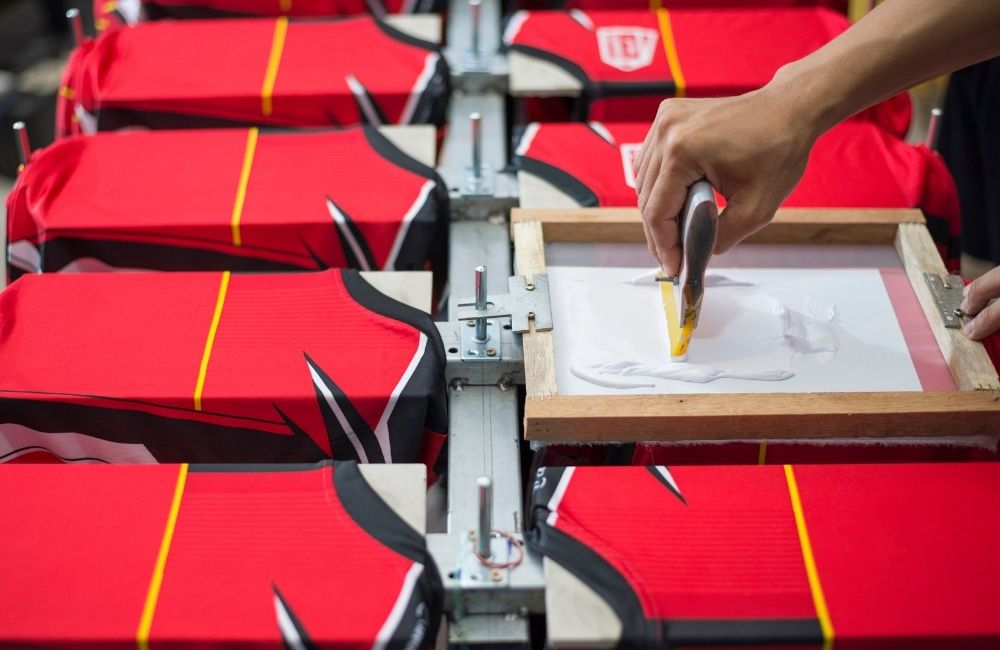
Now’s the time to introduce your print-on-demand business to the world. You’ve managed your inventory with precision, set up seamless payment processing, and are now ready to welcome a flow of orders. So, take a deep breath and open your digital doors to your excited audience!
Seek Feedback from Friends and Family
Before you go wide, start close to home. Engage friends and family as your first customers and critics. Their honest feedback is invaluable. Let them navigate your website, sample your products, and give their candid thoughts on everything from pricing to user experience.
Analyze Sales Statistics and Customer Comments
As orders roll in and comments come through, pay close attention. This data is a treasure trove of insights. What products are flying off the virtual shelves? Where are people dropping off on your site? Which designs are receiving rave reviews? By analyzing sales statistics and customer feedback, you’ll learn what’s working and what’s not. Use this knowledge to adjust and improve continuously.
Constant Learning and Adaptation
The market is always changing, and so should you. Embrace a mindset of constant learning and be ready to adapt. Whether it’s tweaking your designs, adjusting your marketing strategy, or overhauling your customer service approach, stay agile. This iterative process is key to staying relevant and appealing to your audience, ensuring your business not only survives but thrives.
How Much Does It Cost to Start a Print-On-Demand Business?
Starting a print-on-demand business comes with varying costs depending on your approach, about $50 to $2000 or more. For a minimum investment, utilizing a free platform, creating DIY designs, and relying on organic marketing can keep expenses within the range of $0 to $50.
If you opt for a moderate strategy, involving freelance designers, some paid advertising, and possibly exploring pre-orders, the estimated cost falls between $50 and $500.
For those looking to take their print-on-demand venture to an advanced level, with a custom website and extensive marketing campaigns, the potential cost ranges from $500 to $2,000 or more, offering a higher level of customization and promotional reach.
Top 8 Print-On-Demand Examples
When it comes to the print-on-demand world, it’s important to consider some specific businesses that we can look up to. Here are 8 inspiring examples of successful print-on-demand businesses, each showcasing different strengths and approaches:
1. Redbubble
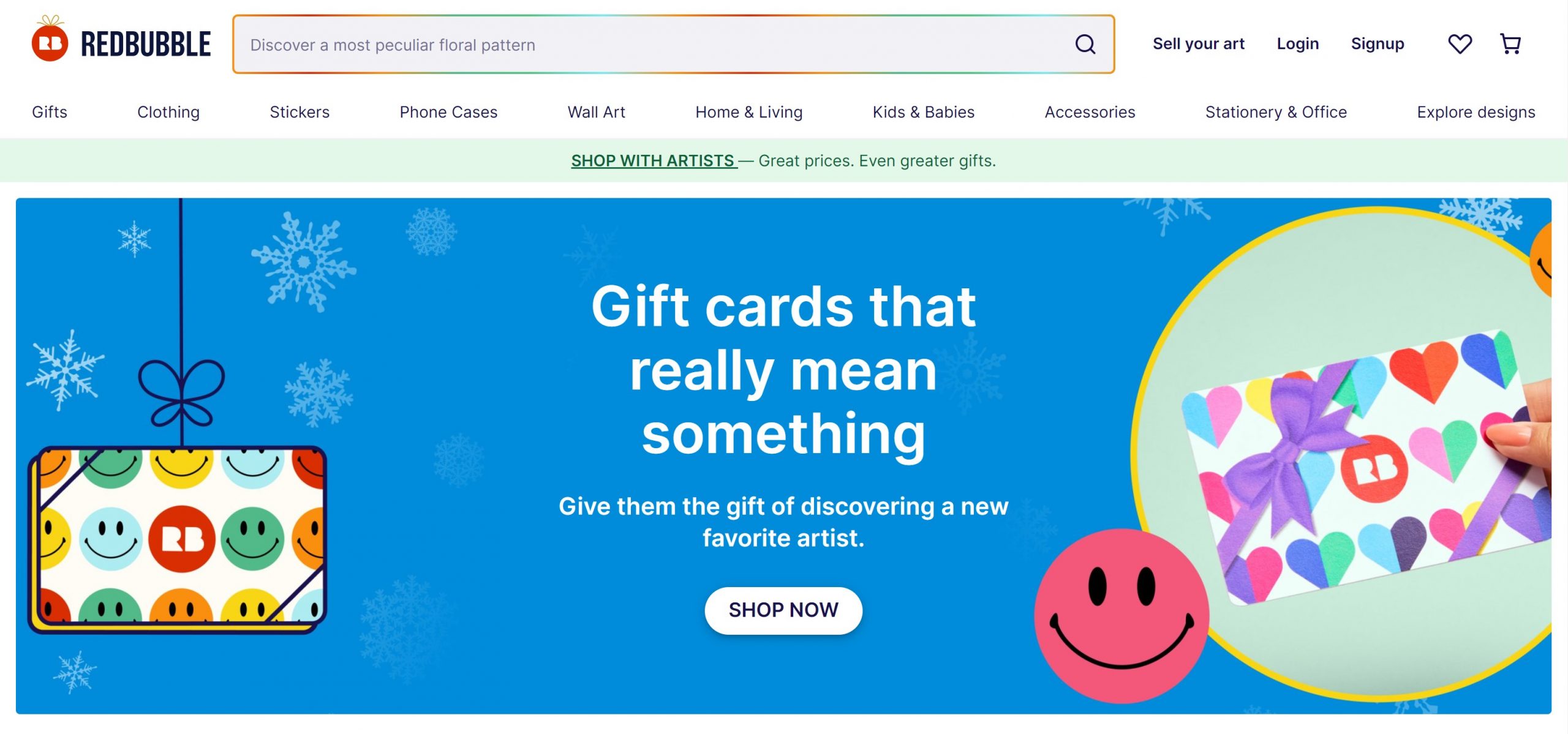
Beyond its established brand recognition, Redbubble offers numerous advantages for artists. Their expansive product range allows creators to explore different mediums and cater to diverse audiences. Additionally, Redbubble’s global reach facilitates international sales, opening up potential markets for artists with unique styles or niche appeal.
While competition on the platform can be high, Redbubble’s established marketing infrastructure and promotional tools can act as a significant boost for artists starting out, helping them reach a wider audience and build a dedicated following.
2. Society6
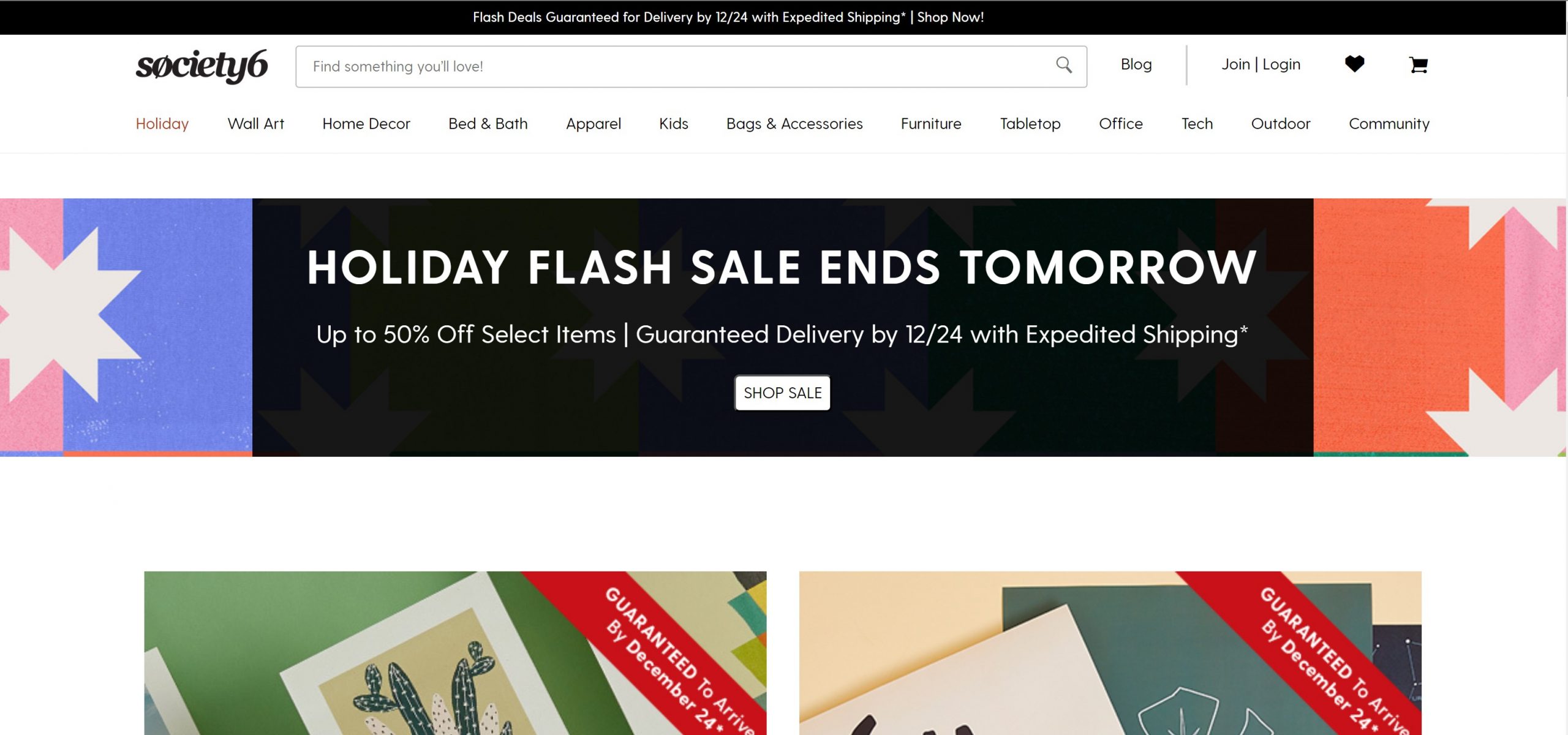
Beyond collaborations with established brands, Society6 also fosters partnerships with emerging artists and designers, providing them with a platform to showcase their work and tap into a curated audience. Their focus on high-quality materials and ethical practices resonates with customers seeking sustainable and conscious alternatives.
Additionally, Society6’s commitment to artist empowerment includes regular workshops, resources, and educational initiatives, empowering creators to navigate the POD landscape and build successful businesses.
3. TeePublic
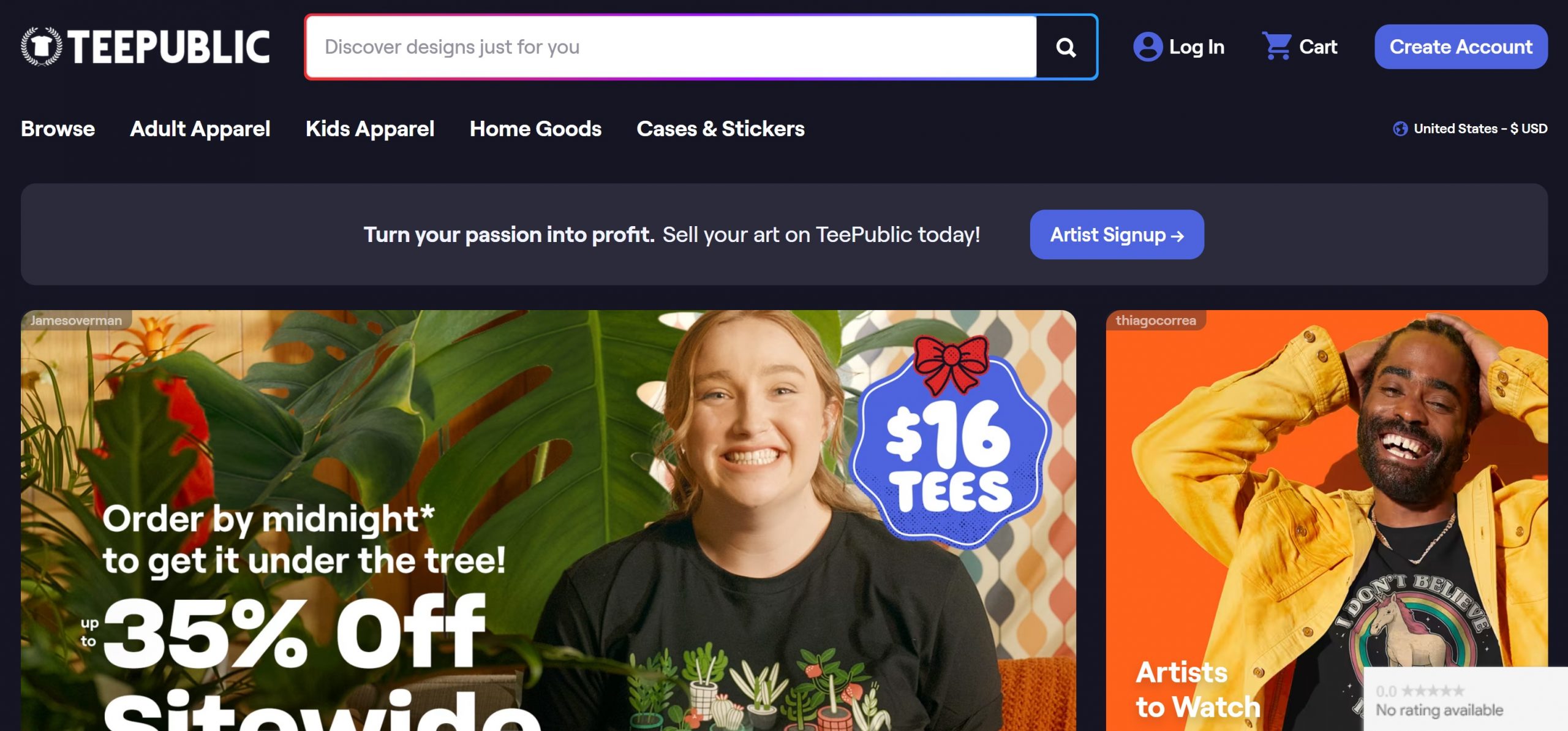
Known for its playful and often humorous designs, TeePublic improves user-generated content through contests and challenges, further strengthening its community engagement. Their “design lab” feature allows users to play and remix existing designs, fostering a collaborative spirit and encouraging co-creation. This interactive approach not only generates fresh content but also builds a loyal customer base invested in the platform’s creative ecosystem.
4. Threadless
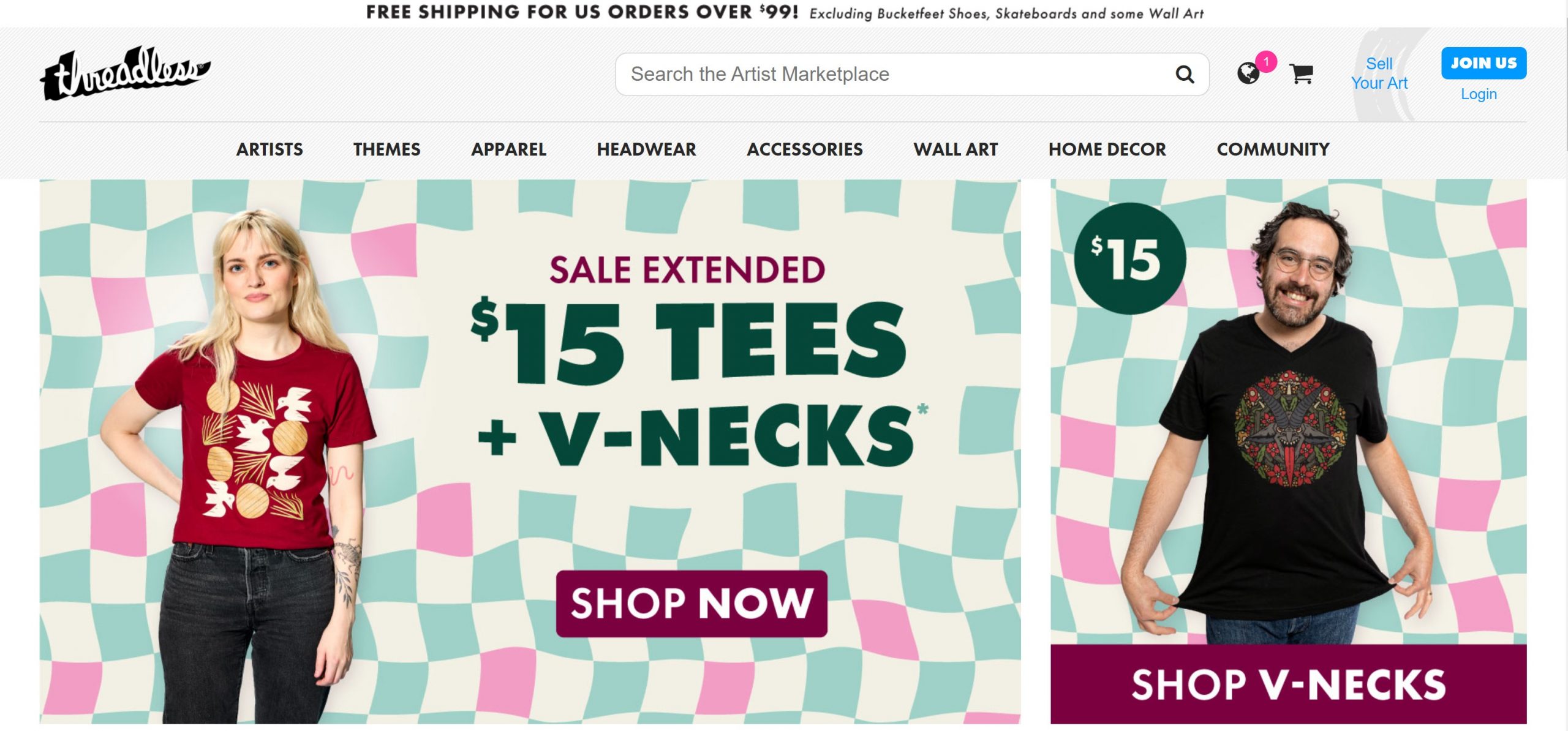
Threadless fosters a sense of community through user forums and active social media channels. These spaces allow design enthusiasts to discuss ideas, provide feedback, and celebrate each other’s work.
This collaborative atmosphere fosters mutual respect and encourages aspiring designers to learn and grow within the community. Additionally, Threadless offers limited-edition collections and surprise releases, adding an element of exclusivity and excitement to the platform.
5. Teelaunch
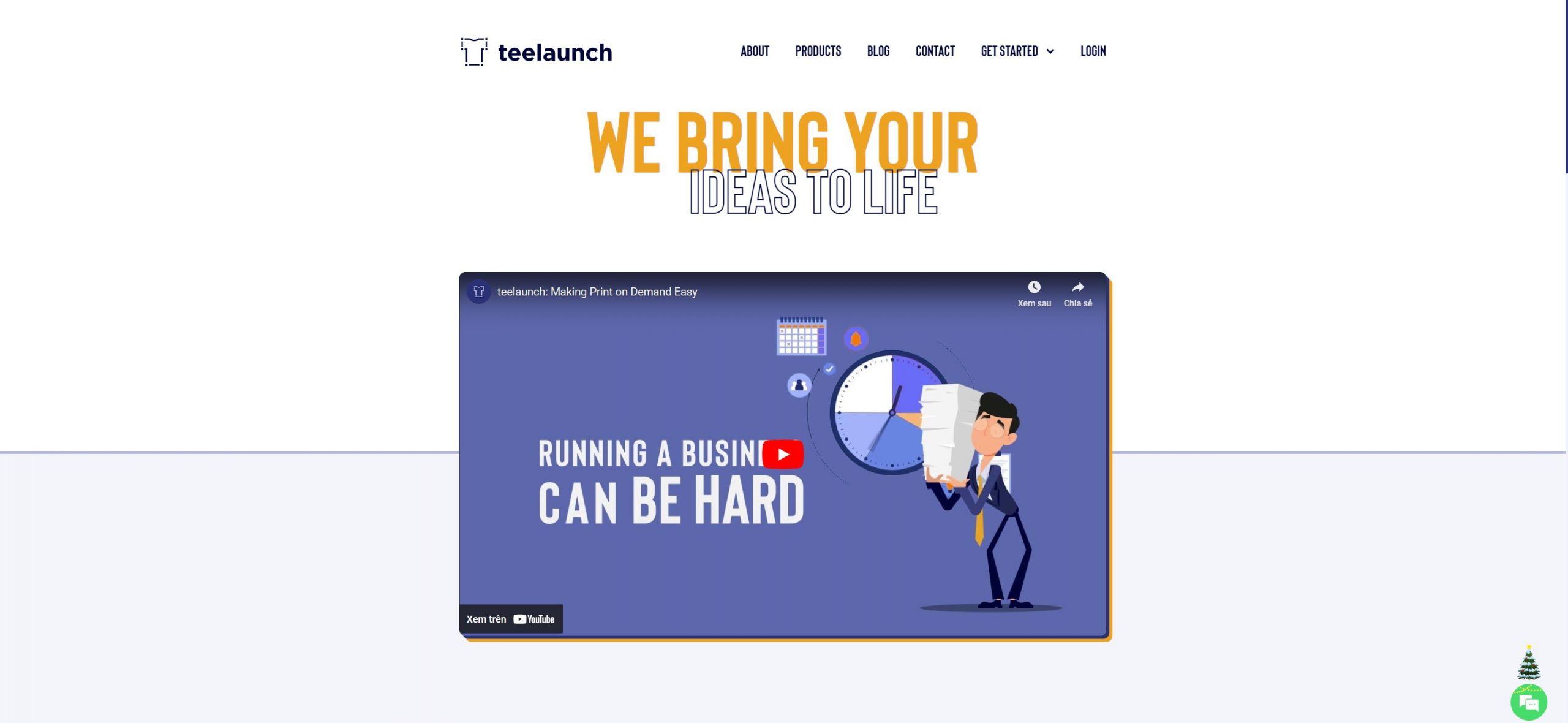
Known for its focus on high-quality apparel and fast turnaround times, Teelaunch caters to businesses and brands looking for reliable print-on-demand services. Teelaunch provides additional services like warehousing and fulfillment, streamlining the workflow for businesses and brands.
Their comprehensive platform integrates seamlessly with popular e-commerce platforms, simplifying inventory management and order processing. Additionally, Teelaunch offers white-label solutions, allowing brands to fully customize the customer experience, including packaging and branding elements.
6. Gooten
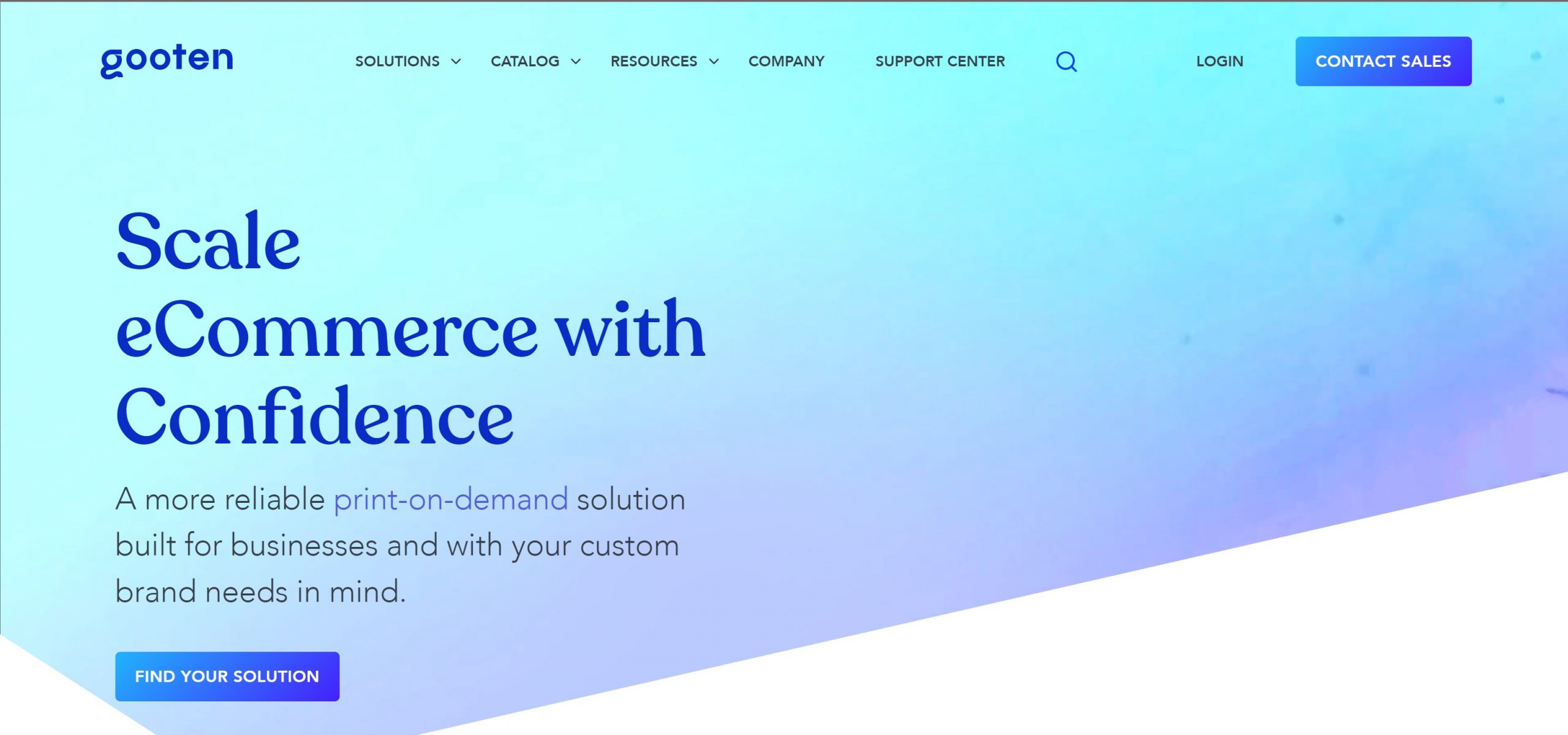
Taking a different approach, Gooten aggregates products from multiple POD suppliers, offering a vast selection and the ability to customize product features beyond just design.
Gooten prioritizes environmental sustainability. They partner with eco-friendly print providers and offer products made from recycled materials. Additionally, their distributed network of suppliers reduces carbon emissions associated with shipping by optimizing production locations based on order destinations.
7. Printify
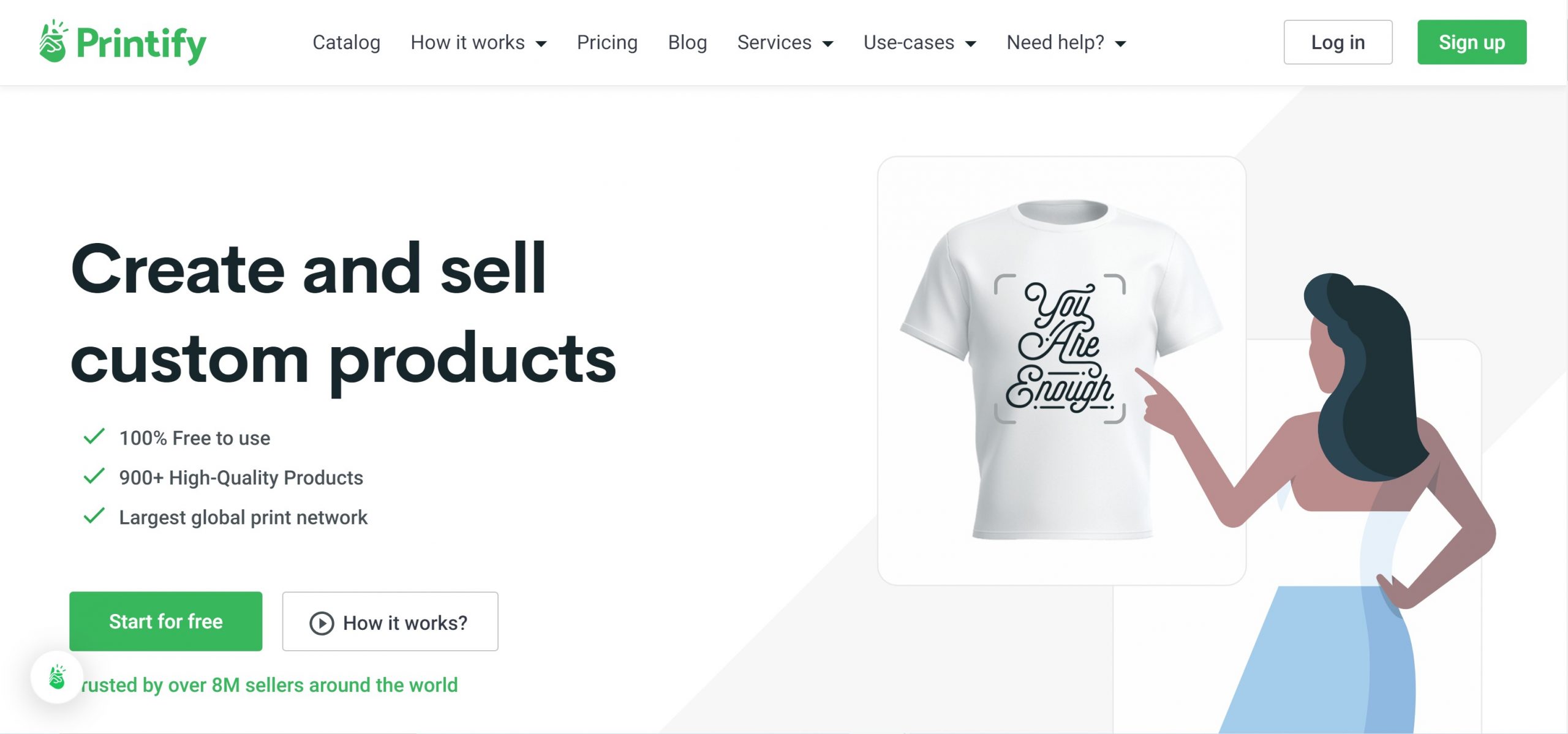
This POD platform stands out for its transparent pricing and affordable rates, making it a great option for budget-conscious entrepreneurs. Their vast network of print providers also offers geographical advantages, potentially reducing shipping times for specific regions.
Printify offers several benefits for budget-conscious entrepreneurs. Their user-friendly interface and intuitive design tools make the platform accessible for newcomers with minimal technical experience.
Additionally, they provide educational resources and tutorials, empowering entrepreneurs to navigate the world of POD and build successful businesses on a budget.
8. Spreadshirt
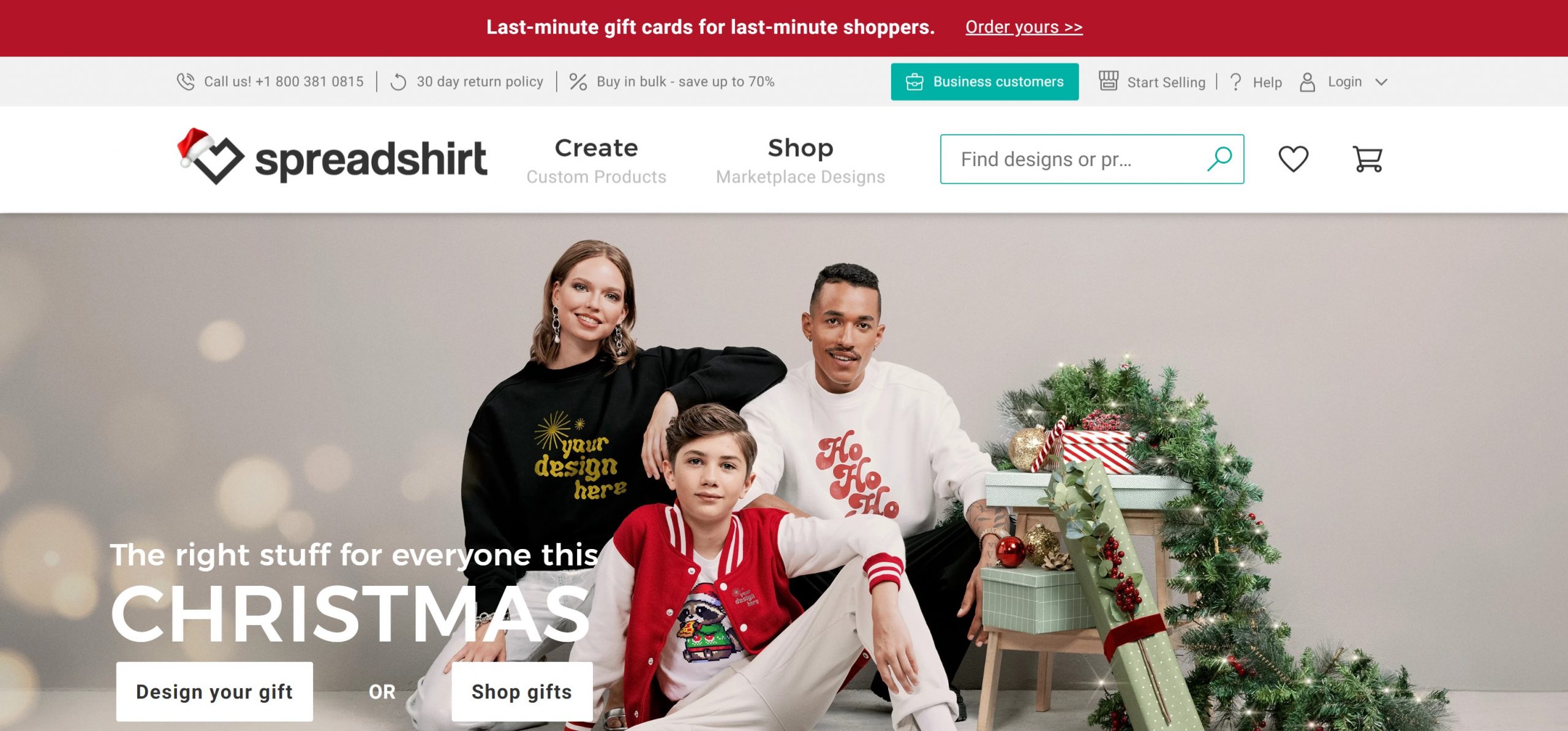
With a strong focus on Europe and a long history in the POD industry, Spreadshirt offers a well-established platform and diverse product range, including unique options like bags and sports apparel. This makes them a reliable choice for European entrepreneurs or businesses targeting that market.
Spreadshirt boasts a strong commitment to innovation. They continuously develop new printing techniques and expand their product range, responding to emerging trends and customer preferences.
They actively engage with influencers and participate in industry events, staying ahead of the curve and establishing themselves as a market leader in the European POD landscape.
FAQs
1. Is a print-on-demand business profitable?
A print-on-demand business can be profitable. Success in a print-on-demand business hinges on niche and design choices, targeting specific, passionate audiences. Effective marketing, a strong brand identity, healthy profit margins, reliable providers, and excellent customer service are key factors. While not guaranteed, many print-on-demand businesses can be profitable with careful research, dedication, and strategic planning.
2. Is print-on-demand passive income?
Print-on-demand generates residual income but is not entirely passive. While ongoing management is necessary, the initial setup of your store, designs, and marketing plan lays the groundwork for future sales. Despite this foundation, proactive efforts such as regular design updates, promotions, and engagement with your target audience are essential for maintaining success over time.
3. How do I create a print-on-demand company?
Creating a print-on-demand company involves several steps, from choosing a niche and target audience, designing or sourcing high-quality products and artwork, selecting a reliable print-on-demand platform, creating your online store, implementing marketing strategies, and don’t forget to provide excellent customer service to maintain a sustainable POD business:
- Choose a niche and target audience: Identify a specific market segment and the audience you want to cater to.
- Design or source high-quality products and artwork: Create appealing designs or source products and artwork that align with your chosen niche.
- Select a reliable print-on-demand platform: Choose a reputable platform such as Redbubble or Printify to fulfill your printing and shipping needs.
- Create your online store: Utilize platforms like Shopify or Etsy to set up your online storefront where customers can browse and purchase your products.
- Implement marketing strategies: Develop and execute marketing strategies to effectively reach your target audience and promote your products.
- Provide excellent customer service: Establish a commitment to excellent customer service to build trust, encourage repeat business, and enhance your brand reputation.

